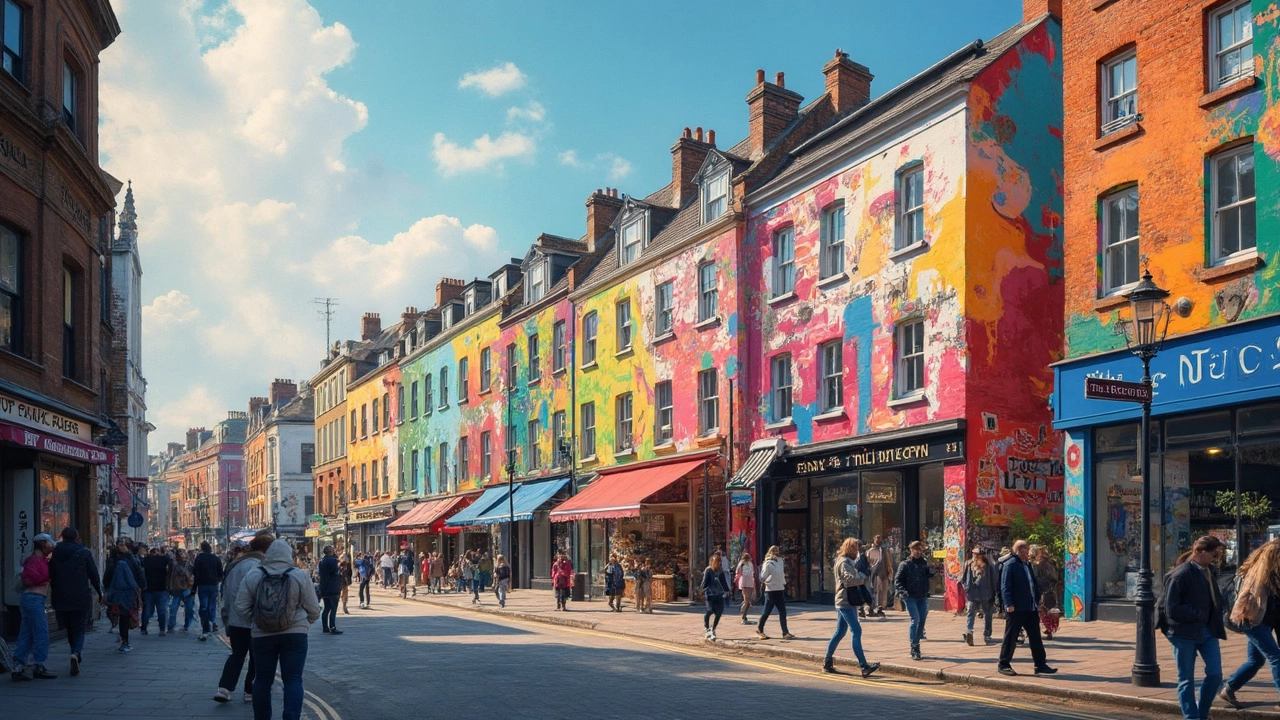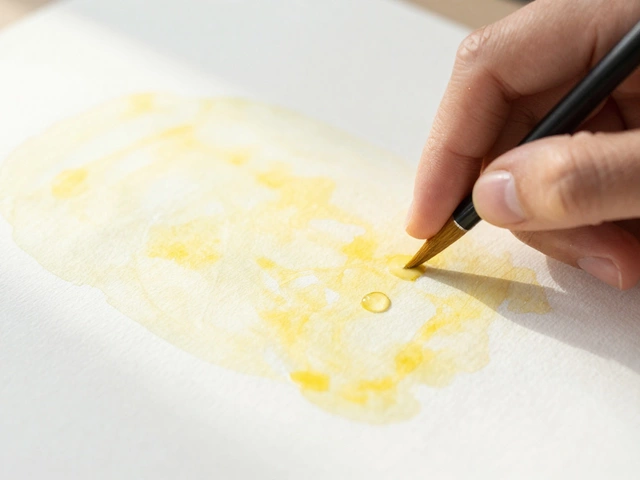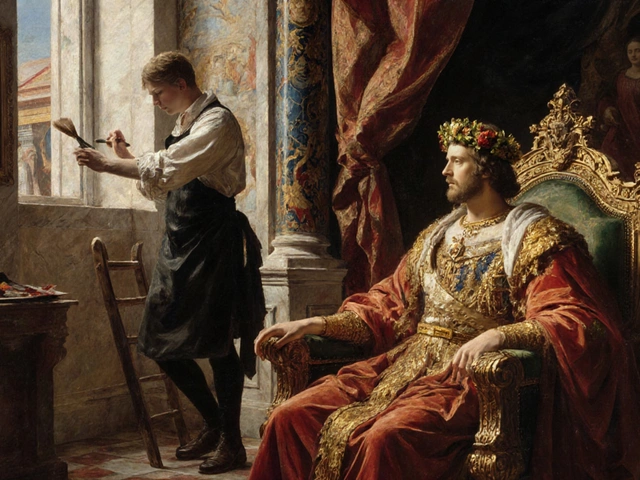Modern art isn't your grandma's wall of landscapes. It's an explosion of colors, thoughts, and sometimes downright weird-as-heck stuff that makes you stop and go, “Huh?” We've all been there, scratching our heads in front of a canvas that looks like someone slapped it with a kitchen sponge. But there's more to it. There's method in the madness, and it all revolves around some pretty interesting principles.
First up, it's all about breaking the mold. Modern art throws the rule book out the window. Those who love sticking to tradition might cringe, but that's exactly what makes it exciting. Artists now play with new forms and styles, defying what was once considered 'normal.' This isn't just rebellion for the sake of rebellion; it's about finding fresh ways to express human experience. Sound chaotic? That's kind of the point.
- Breaking Traditions
- Innovation and Experimentation
- Diversity and Inclusion
- Expression and Emotion
- Technology and New Media
Breaking Traditions
Ditching the comfort of familiar styles, modern art shrugs off the past with all the bravado of a rebellious teenager. We're talking about art movements like Dada, Cubism, and Surrealism, each challenging what art should be. Before these, art was often about perfection, technique, and capturing real life as accurately as possible. Enter modern artists who look at traditional art rules and say, “Nah, let's shake things up.”
Take Picasso, for example, with his fragmented faces and distorted bodies. This wasn't some trick to annoy art critics. It was a way to see different perspectives in a single glance, blowing up the ‘one true view’ approach. Cubism, which he helped pioneer, turned ordinary objects into geometric forms. It showed the world that there's more to people and things than meets the eye.
Then there's Dadaism—born amid the chaos of World War I, it was a big middle finger to traditional art. Dadaists turned absurdity into art, challenging seriousness and conventional tastes. Marcel Duchamp, one of Dada's big names, famously took a urinal, called it 'Fountain,' and suddenly the art world had something new to argue about.
This move to break with tradition opened the gates to loads of freedom and sparked creativity without boundaries. Artists started tackling themes like identity, politics, and emotions in ways never done before. It might look like chaos, but it's precisely this unpredictability that has kept modern art moving forward and making statements.
Innovation and Experimentation
Innovation is the heartbeat of modern art. Artists today aren't just sticking to paint and brush; they're experimenting with everything from digital tools to sounds. This shake-up in the art world isn't just a phase—it's redefining how we think about art.
When Picasso played with form and shape to create cubism, he shattered the way we look at the human figure. Fast forward to the 21st century, and we have digital artists messing with algorithms to create mind-bending visual experiences. Every piece of contemporary art tells us that there's no final frontier to creativity; the sky's not even the limit anymore.
One thing that's super cool about all this innovation is how much it's opening up the art world. Remember that time when art galleries felt like places where you had to whisper? Not anymore! An installation using VR might have you dancing around or interacting with the artwork. It's not just about looking; it's about feeling.
"Every act of creation is first an act of destruction." – Pablo Picasso
This quote from Picasso gets right to the core of what artistic expression in modern times is all about. It breaks down the old to build the new, offering fresh perspectives in ways nobody thought were possible before.
If you're thinking about diving into this world yourself, here are a few experimental techniques trending now:
- Interactive Art: Engage the audience directly, allowing them to become part of the art.
- Mixed Media: Combine various materials, like canvas, digital elements, and even sounds, to create a multi-sensory experience.
- Augmented Reality: Use AR to layer additional pieces or meanings over a physical artwork, adding depth.
The boundaries are constantly being pushed, and if it sounds wild, that's because it is! The goal isn't just to create but to question, provoke, and inspire. Artists today thrive on the unknown, finding beauty in unexpected places. And that's what makes this era of modern art so thrilling. Why stick to the status quo when you can shake things up and revolutionize how art is perceived?
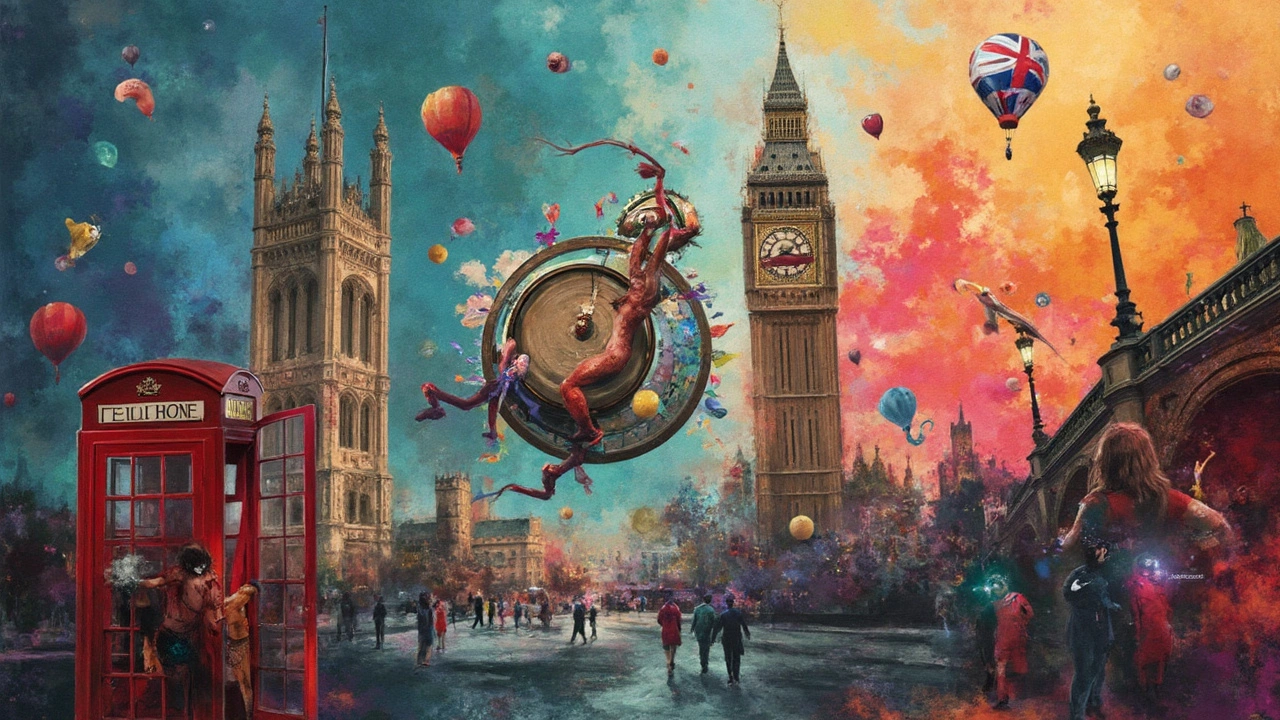
Diversity and Inclusion
Picture this: once upon a time, the art world was like an exclusive club, letting in only a select few. Fast forward to today, and we’re looking at a whole new ball game. Modern art has thrown its doors wide open. It's no longer just the realm of European male painters; it’s a playground where everyone gets a voice.
Diversity is a driving force behind the evolution of modern art. Artists from all walks of life bring their unique perspectives which shake things up in fantastic ways. Consider the work of artists like Yoko Ono, a Japanese multimedia artist, or Jean-Michel Basquiat, whose graffiti-inspired paintings challenge and redefine norms. Their diverse backgrounds give them fresh stories to tell, adding richness to the art scene.
Inclusion is key here too. Artists are pushing boundaries and breaking barriers to ensure that different cultures, genders, and ideologies are represented. This isn't just about ticking boxes – it's about making art a reflection of the world, showing its wide variety of voices and experiences. In a way, modern art becomes a canvas for social change, spotlighting important issues like race, gender equality, and identity.
If you take a stroll through major art galleries or browse through exhibits online, you’ll notice more art from groups traditionally underrepresented in the past. The global reach of technology has made it easier for artists to share their work and collaborate across continents.
This shift affects not just what’s displayed on gallery walls but also how art is created and experienced. Influences from street art, indigenous cultures, and digital creations mash together into something entirely new and ever-changing. This revolution helps the art world grow and encourages audiences to appreciate all the dynamic stories being told.
Expression and Emotion
If there's one thing that modern art has nailed, it's putting feelings right at the forefront. Ever looked at a piece of art and felt like you were punched in the gut or hugged by an old friend? That's exactly what modern art aims to achieve. It's not just about what you see; it's about what you feel.
A lot of modern artists believe that raw emotion is at the core of their work. Take, for example, the famed painter Jackson Pollock. Known for his drip techniques, Pollock's chaotic canvases might look haphazard, but they come with intense emotional weight. He once said, "Painting is self-discovery. Every good artist paints what he is." And that's the crux of it—modern art gives artists the freedom to explore their emotions without boundaries.
Artists today often use their work as a mirror to society's emotions, expressing everything from joy to deep sorrow without sugar-coating anything. This is why you'll find both stark beauty and harsh realities side by side in galleries. The idea is to stir up some sort of response from the viewer, making them think and feel, sometimes even simultaneously.
One influential aspect is the use of color to convey emotion. Bright colors might evoke feelings of happiness or optimism, while darker tones suggest sadness or introspection. Abstract Expressionism, a big name in the world of modern art, really dives into this. Artists like Mark Rothko use large blocks of color to elicit emotional responses.
"Art should comfort the disturbed and disturb the comfortable." – Banksy
So, when you stand before a piece that seems to shout at you, know it's not just random paint splatters or arbitrary shapes. It's a language of feeling, where rules are secondary to the heart of the matter. Modern artists dig deep into that well of emotion to connect with others on a purely human level.
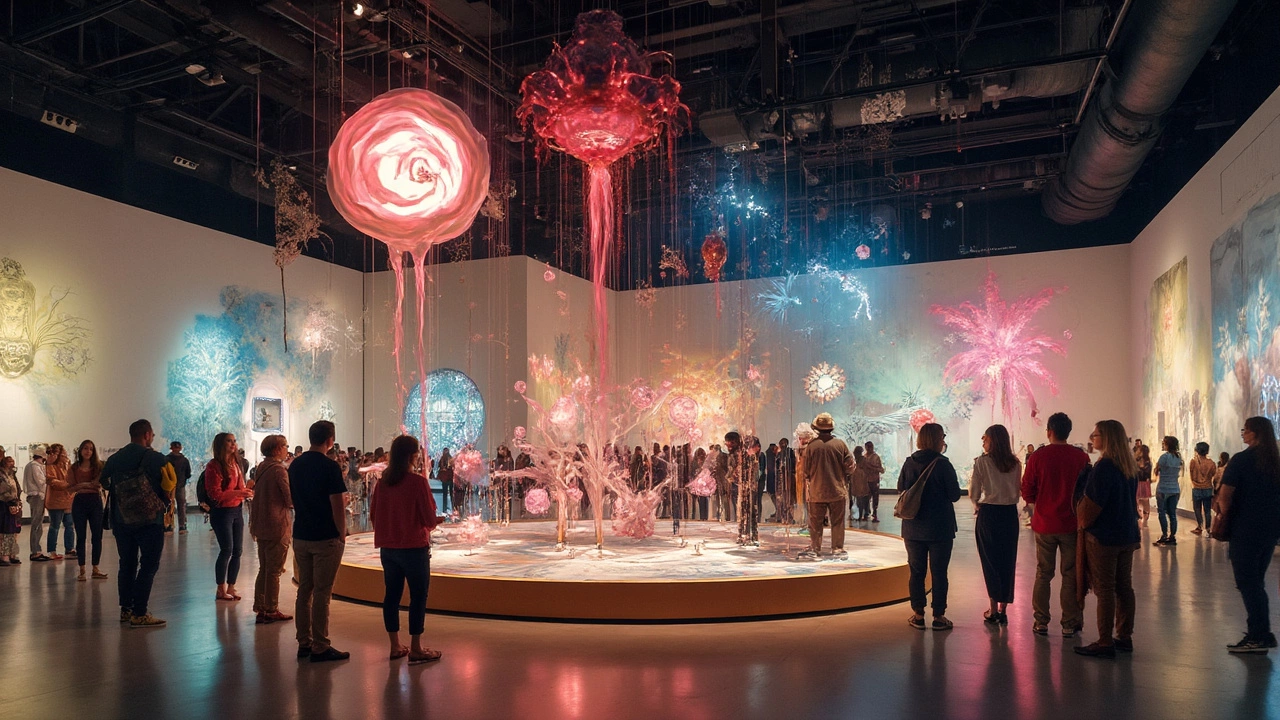
Technology and New Media
In today's world, technology isn't just a tool—it's an art form in itself. Modern art thrives on the integration of tech, shaking up how we create and consume art. This might sound techy, but think about it: if you've ever marveled at digital installations or interactive exhibits, you're witnessing how technology brings a whole new layer to art.
Virtual reality (VR) is a hit in the art scene, letting artists craft immersive experiences that take you beyond the canvas. You don’t just look at a painting; you step inside it. This technology tailors experiences that engage your senses in ways traditional media might not.
Then there's augmented reality (AR) which overlays digital art into the real world. Imagine pointing your smartphone at a mural and watching it come to life. It's like getting the best of both worlds—seeing digital creations interact with the physical environment.
- Contemporary art goes online with platforms like Instagram and DeviantArt, where everyone from fledgling artists to established ones share and discover new work.
- Blockchain technology gets its time to shine too, with NFTs (Non-Fungible Tokens) shaking up ownership and investment in art.
- Tech-savvy artists use AI to generate art, showing that machines can create, but creativity is still very much a human trait.
This tech boom democratizes art, giving more people access to create and experience it anywhere, anytime. And it's not just humans getting creative—AI and algorithms are stepping up, offering new ways to think about creativity and originality.
Keep in mind, not everyone is cheering. There's been debate over whether digital art lacks the 'soul' of traditional methods. Regardless of where you stand, what's clear is that technology and new media have carved a permanent spot on the modern art scene, reshaping how we define and interact with art.
